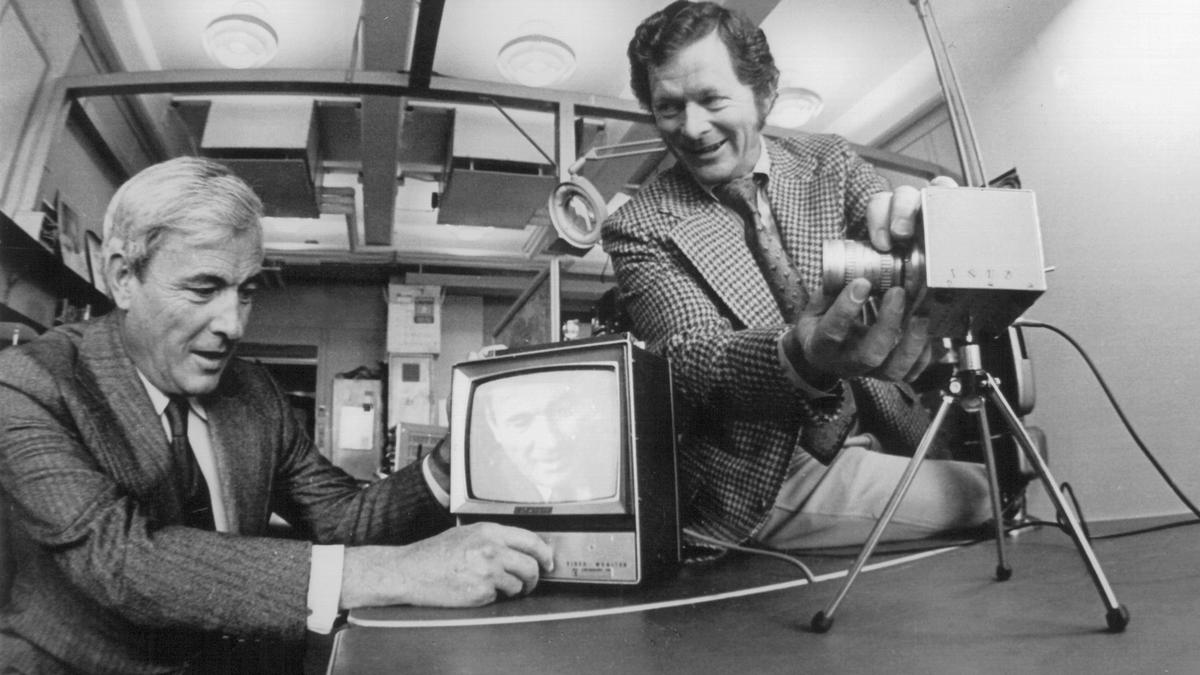Science
Charge-Coupled Devices Transform Digital Imaging Landscape

A charge-coupled device (CCD) has fundamentally changed the way images are captured and processed since its invention in 1969. Developed by Willard Boyle and George Smith at Bell Telephone Laboratories, the CCD technology has had a profound impact across multiple fields, including photography, medicine, and astronomy. By converting light into electrical signals, CCDs have paved the way for advancements in digital imaging, transforming how visual information is shared and analyzed.
Understanding Charge-Coupled Devices
At its core, a CCD is an integrated circuit that contains an array of small elements called pixels. Each pixel functions as a light sensor, collecting photons and converting them into electrical charges. The process resembles a grid where each square captures light and translates it into a measurable electric signal. Once these charges are collected, they are transferred sequentially across the device, ultimately being processed into a digital image.
The invention of the CCD stemmed from Boyle and Smith’s exploration of semiconductor technology. Initially aiming to create new memory devices, they discovered a method to store and shift electrical charges using closely arranged capacitors. This innovation allowed for the controlled transfer of charges, forming the basis of how CCDs capture images. Their groundbreaking work was recognized with the Nobel Prize in Physics in 2009, underscoring the significance of their contribution to science and technology.
How CCDs Operate
CCDs operate based on the photoelectric effect. When light strikes the semiconductor material beneath each pixel, it generates electron-hole pairs. This energy dislodges electrons, creating a charge proportional to the light intensity. Each pixel acts as a small capacitor that retains these charges.
A voltage is then applied to electrodes over the pixels, facilitating the movement of charges, akin to passing buckets of water along a line. This sequential transfer continues until all charges reach a readout register. The result is a voltage signal that can be amplified and digitized, forming a high-quality digital image. This method allows CCDs to deliver exceptional detail and clarity in the images they produce.
Applications Across Various Fields
Since their introduction, CCDs have revolutionized numerous industries by enhancing their ability to capture light as data. In everyday life, CCDs have been instrumental in the rise of digital cameras, replacing traditional film with electronic sensors. This shift enables users to view, edit, and store images instantly, significantly impacting media consumption and personal photography.
In the security sector, CCDs are utilized in CCTV cameras, providing high-quality video feeds in locations such as banks, shopping malls, and hospitals. Their high resolution and sensitivity also play a crucial role in medical diagnostics, including X-ray imaging, computed tomography (CT) scans, and endoscopy. These capabilities enable healthcare professionals to obtain clearer images, which contribute to more accurate diagnoses and treatment plans.
Furthermore, CCDs are essential in scientific research. They are employed in microscopes, spectrometers, and particle detectors, allowing scientists to analyze images in detail. This precision is vital in fields like biology and materials science, where understanding cellular structures and material properties is crucial.
In astronomy, CCDs have become the preferred technology for capturing astronomical images. Telescopes equipped with CCDs can detect faint celestial objects with greater sensitivity and accuracy than traditional photographic plates. This advancement has significantly enhanced our understanding of the universe, leading to discoveries of distant galaxies, exoplanets, and various cosmic phenomena.
The evolution of charge-coupled devices illustrates the profound impact of a single technological innovation on multiple fields. From transforming photography to advancing medical diagnostics and expanding our understanding of the universe, CCDs have reshaped how we capture and interpret visual information, marking their place as one of the most significant technological advancements of the 20th century.
-

 World5 months ago
World5 months agoSBI Announces QIP Floor Price at ₹811.05 Per Share
-

 Lifestyle5 months ago
Lifestyle5 months agoCept Unveils ₹3.1 Crore Urban Mobility Plan for Sustainable Growth
-

 Science4 months ago
Science4 months agoNew Blood Group Discovered in South Indian Woman at Rotary Centre
-

 World5 months ago
World5 months agoTorrential Rains Cause Flash Flooding in New York and New Jersey
-

 Top Stories5 months ago
Top Stories5 months agoKonkani Cultural Organisation to Host Pearl Jubilee in Abu Dhabi
-

 Sports4 months ago
Sports4 months agoBroad Advocates for Bowling Change Ahead of Final Test Against India
-

 Science5 months ago
Science5 months agoNothing Headphone 1 Review: A Bold Contender in Audio Design
-

 Top Stories5 months ago
Top Stories5 months agoAir India Crash Investigation Highlights Boeing Fuel Switch Concerns
-

 Business5 months ago
Business5 months agoIndian Stock Market Rebounds: Sensex and Nifty Rise After Four-Day Decline
-

 Sports4 months ago
Sports4 months agoCristian Totti Retires at 19: Pressure of Fame Takes Toll
-

 Politics5 months ago
Politics5 months agoAbandoned Doberman Finds New Home After Journey to Prague
-

 Top Stories5 months ago
Top Stories5 months agoPatna Bank Manager Abhishek Varun Found Dead in Well









